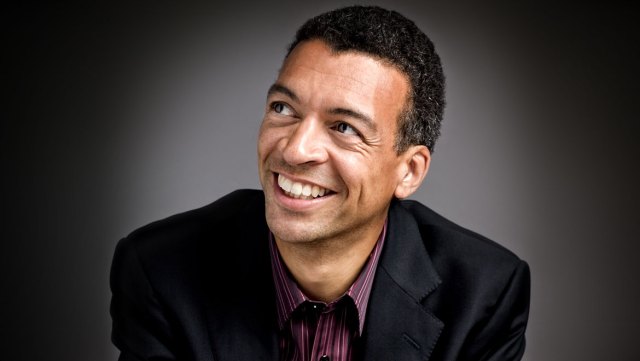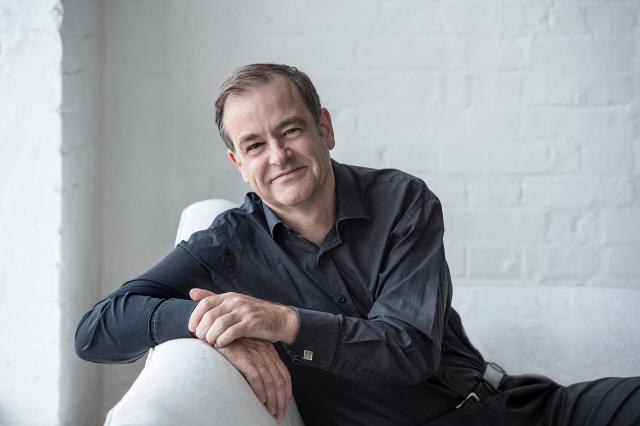Roderick Williams, baritone
Julius Drake, piano
Adam Gopnik, narrator
Cristina Garcia Martin, animations
Theresa L. Kaufmann Concert Hall
92nd Street Y
New York, NY
January 22, 2020
Beethoven: An die ferne Geliebte, Op. 98
Brahms: Romanzen aus L. Tieck’s Die schöne Magelone, Op. 33
If Beethoven didn’t invent the song cycle, surely he was the first great composer to embrace such a structure with his modest yet nonetheless epochal An die ferne Geliebte. In this 250th anniversary of Beethoven’s birth year, all the installments of 92Y’s vocal series include the aforementioned in concert with an entry from the immense body of work it spawned: Roderick Williams and Julius Drake’s Wednesday evening recital paired it with Brahms’ Die schöne Magelone. Before diving in to the Beethoven archetype, the affable Williams addressed the audience with some musings about what constitutes a song cycle, humorously noting that one such distinction is the point at which one applauds.

The six songs that comprise An die ferne Geliebte barely stretch a quarter hour, but they say much in little – tautly constructed, and with ingenious transitions in the piano to connect each song to its successor in a continuous arc. Williams’ razor-sharp German diction served to convey the wistfulness in the opening Auf dem Hügel sitz ich spähend, as did the longing appoggiaturas from the keyboard. A texture of roiling triplets marked Leichte Segler in den Höhen, delivered with a lightness of touch though matters grew darker along with the clouds depicted. The closing Nimm sie hin denn, diese Lieder counted as a further highlight in its sonorous resound in conveyance of deep Sehnsucht, with a recurrence of the material from the first song bringing things to a satisfyingly cyclical close.
The rather more extensive Magelone songs – which the program notes rightfully called a “neglected masterpiece” – were given an ambitious multimedia treatment. Brahms asked for portions of Tieck’s prose (published in the late 18th century, drawing on a legend that dates from medieval France) to be read between songs – in many regards, a necessity given the cumbersome narrative and that not all songs are from the protagonist’s point of view. Writer and essayist Adam Gopnik served as a fine narrator, delivering Tieck’s florid text in an English translation by Williams. Additionally, during the narrations, animations by Cristina Garcia Martin were projected, illustrating the tale on a colorful and stylish canvas, and at their best, obviating the need for the audience to meticulously follow along with texts and translations.
The opening Keinen hat es noch gereut was a courtly affair of rollicking energy, while the succeeding Traun! Bogen und Pfeil showed the performers at their most defiant, with Drake offering some extrovert playing, handily surmounting Brahms’ thorny piano writing. Wie soll ich die Freude was a touchingly lyrical expression of bliss and joy – this fairy tale with an eventual happy ending so much the opposite of the tragic depths favored in the Romantic era song cycles – and served as a logical break before the intermission. Wir müssen uns trennen offered delicate imitation of the lute, and here was a clear case where the narration and animation helped frame the song in context – otherwise one might well have been left wondering why at this point the protagonist was singing a heartfelt goodbye to a lute.
By the same token, given the improbability of this fairy tale narrative, I couldn’t help but wonder if these extramusical interjections were altogether necessary – perhaps it is more fruitful to eschew any distractions from a convoluted plot and instead allow the audience to zero in on the exquisitely crafted music in of itself. Wie schnell verschwindet was the first real instance of melancholy, and quite movingly so, but countered in due course by the coquettishness of Sulima. Williams and Drake gave the penultimate Wie froh und frisch mein its requisite heroism, and the closing Treue Liebe dauert lange was a hymn to the power of true love, with Williams’ rich baritone resonating stately and pensive.

